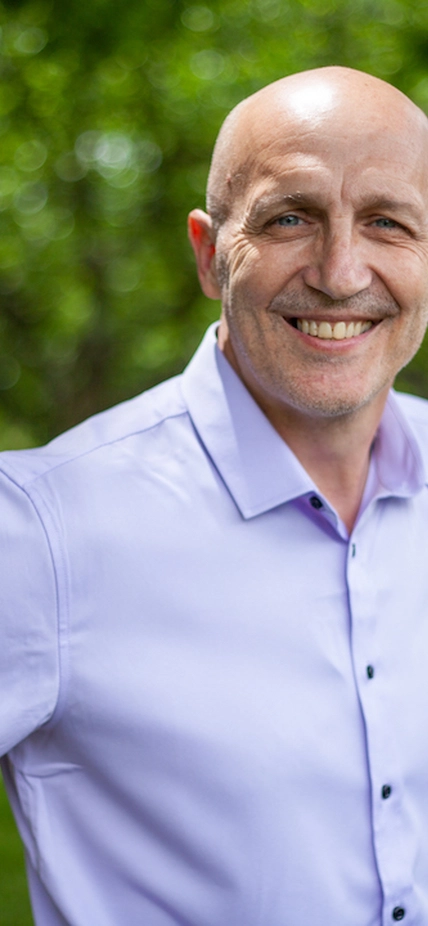In an essay expounding on the role of private science institutions in the modern research landscape, Carnegie President Eric Isaacs writes that “… independent research organizations bear a deep historical responsibility to keep on interrogating the fundamental mysteries of life and the universe.” This month’s newsletter is a shining example of how we continue with this tradition at Carnegie and EPL today while honoring the giants from our past.
Marilyn Fogel wins prestigious Goldschmidt Award
To begin we are once again reminded of the tremendous legacy of Carnegie scientists with the announcement that former Geophysical Laboratory* Staff Scientist Marilyn Fogel, a 33-year Carnegie veteran, was awarded the prestigious Victor Moritz Goldschmidt Award, the apex of honors bestowed by the Geochemical Society, for her often groundbreaking and always impactful research in isotope biogeochemistry. Marilyn epitomizes the intrepid explorer using her skillset, intuition and intellect to attack problems across a huge swath of uncharted territory, all the while mentoring a new generation of young scientists and providing a role model for women in STEM worldwide. We could not be happier for Marilyn and prouder of her accomplishments.
*The Geophysical Laboratory and Department of Terrestrial Magnetism merged to create the Earth and Planets Laboratory in 2020.
Volcanic recovery
Speaking of intrepid explorers, EPL’s Diana Roman and Tara Shreve ventured into the Chilean Andes in February to revive an array of geophysical instruments at Villarrica volcano, one of Chile’s most active, which had been stranded there since the pandemic began. Navigating the labyrinth of travel restrictions, and making their way through harsh terrain, they did not know what they would find after two years in harsh conditions. I am happy to report that all of the instruments’ batteries lasted longer than anticipated, and the team has been able to retrieve enough data to start their planned analyses.
The team was able to replace many of the instrument batteries, and they plan to go back again next month to finally retrieve their equipment after more than two years. Then, it's time for deployment on the next volcano… this time by helicopter in the remote Aleutians!
And if that were not enough excitement, Diana was also part of a breakthrough study published in Science investigating the inner workings of volcanos just like Villarrica that erupt magma with high but variable water contents—and it is the water that makes them explosive. The study, led by the Smithsonian’s Daniel Rasmussen, shows how magmatic water content determines storage depth and, ultimately, eruption style.
Postdoctoral Discoveries
And what a couple of months of exciting new discovery it has been, especially for our EPL postdocs!
EPL’s Munazza Alam led a team of observers using the Hubble telescope to collect the first near-infrared transmission spectrum of the atmosphere of a “super puff” exoplanet (officially HIP 41378 f), and while the unusually feature-poor spectra rules out the most obvious of atmospheric culprits, hydrogen and helium, there remains much puzzlement of just what makes the atmosphere so puffy. It looks like the James Webb Space Telescope will be called upon to sort out the possibilities.
Building on the theme of exoplanet mysteries, an EPL team led by Raj Dutta and Sally Tracy used a combination of high pressure and temperature experiments and first-principles computations to create the ludicrously extreme conditions existing in the rocky mantles of super-Earth exoplanets. They report in the journal PNAS an entirely new phase that had only been predicted in theory that, unlike silicates in Earth’s mantle that tend to have four or six oxygens coordinated to each silicon, this new phase has a remarkable eight. This is just the beginning as work now begins to determine what the implications are for the structure and dynamics of deep exoplanetary interiors.
And in the realm of new materials, a striking new result from EPL’s Sam Dunning and Tim Strobel in their ongoing search for ‘space-age’ super-materials. Using pressure as a variable they have found a route to synthesize new diamond nano-threads with diamond-like hardness but with the flexibility of rubber! Their work elucidates how such materials can be synthesized at pressure and provide much sought-after guidance for how synthesis of such extraordinary compounds might be accomplished at ambient conditions, opening up an entirely new class of materials for practical applications. Put in your order for a “bat-suit” now!
Science in your Neighborhood!
Finally, I am pleased to announce the schedule for the Spring 2022 Neighborhood Lecture Series, which will feature exciting virtual and in-person lectures from some of Carnegie’s resident exoplanet experts and astrobiologists. First, on April 28, 2022, Carnegie Staff Scientist Dr. Peter Gao will take you on a tour of some of our Galaxy’s most enigmatic exoplanets in his talk entitled, “Hot Jupiters, Super Puffs, and Lava Planets, Oh My! Exoplanet Science in James Webb Space Telescope Year 1.” Then, on June 16, 2022, join us in person to boldly go where no Neighborhood Lecture has gone before as astrobiologist Dr. Michael L. Wong presents, “The Science of Star Trek.”
I hope to see you all virtually and in-person soon!
Mike Walter
Director
Carnegie Institution for Science
